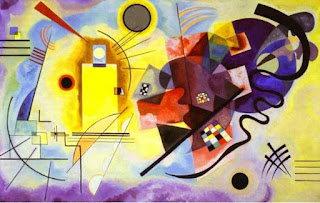The key faculty including artist's were: Wassily Kandinsky (1902-1981), Joseph Albers (1888-1976), Laszlo Moholy-Nagy (1895-1946), Paul Klee (1879-1940) and Johannes Itten (1888-1967). Architects, Walter Gropius (1883-1969) and Ludwig Mies van der Rohe (1886-1969) and Designer Marcel Breuer (1866-1944). The school existed in three German cities, Weimar from 1919-1925, Dessaw from 1925-1932 and Berlin from 1932-1933 but unfortunately had to close due to the pressure from the Nazi regime giving the impression of it being communist intellectualism.
The Bauhaus was shaped by the Arts and Crafts movement and proved to be incredibly influential to the teaching of the arts. This has now led to the teaching of "visual arts" which was once known as "fine art", and has also gave the education of art a sense of importance.
Although there were many talented Artists, designers and architect's who have influenced many within the field of art, I found the work of Marcel Breuer quite interesting. Breuer was a Hungarian -American Designer, Sculptor and Architect and referred to as one of the pioneers of abstract modern art. He was also best known for his "iconic chairs". The Wassily chair, also known as model B3, designed in 1925, is still recreated and sold in this modern day. What I like most about the sleek, simple design is how the idea came from the shape of a bicycle wheel. Breuer was interested in three-dimensional design which he made his main focus throughout his career. He was also inspired by the constructivist theories of the De Stjil movement.
An Artist which I admire is, Laszlo Moholy-Nagy, a Hungarian painter and photographer who also taught as a professor at the Bauhaus School. His work is highly influenced by constructivism with an interest in integration of technology. He was also known as, "arguably one of the greatest influences on post-war art education in USA. In 1930 he worked alongside engineer Istvan Sebok and technician Otto Ball to release the" Light prop for an electric stage, ( light space modular 1930).
Previous to this, he created an abstract piece, titled the"untitled construction" which was created in 1922. I like how the use of line and simple colour choice stands out against the dark background.
Wassily Wassilyevich Kandinsky (1902-1981) is a Russian painter and Art theorist, another Artist whose work I admire. Colour theory played a large part within his work, my favourite artwork is, yellow-red-blue 1925. Kandinsky has used oil on canvas to produce a beautiful array of bright colours. He has used primary colours for the main body of this abstract art, with straight and curved black lines which which surround and overlap the shapes. The black is great at bringing the image to life and it is a beautiful piece to focus on.
"several circles 1926" is another inspiring piece, with use of a variety of circles, different sizes and colours to represent his lifelong search for the perfect form to represent his spiritual expression.
I also found " Composition v111 (1923)" inspiring. This painting was done while Kandinsky taught at the Bauhaus. This was said to be, "an expression of Kandinsky's clarified ideas about modern, non objective art." He creates this feeling through his use of colours, line and dynamic balance.







No comments:
Post a Comment